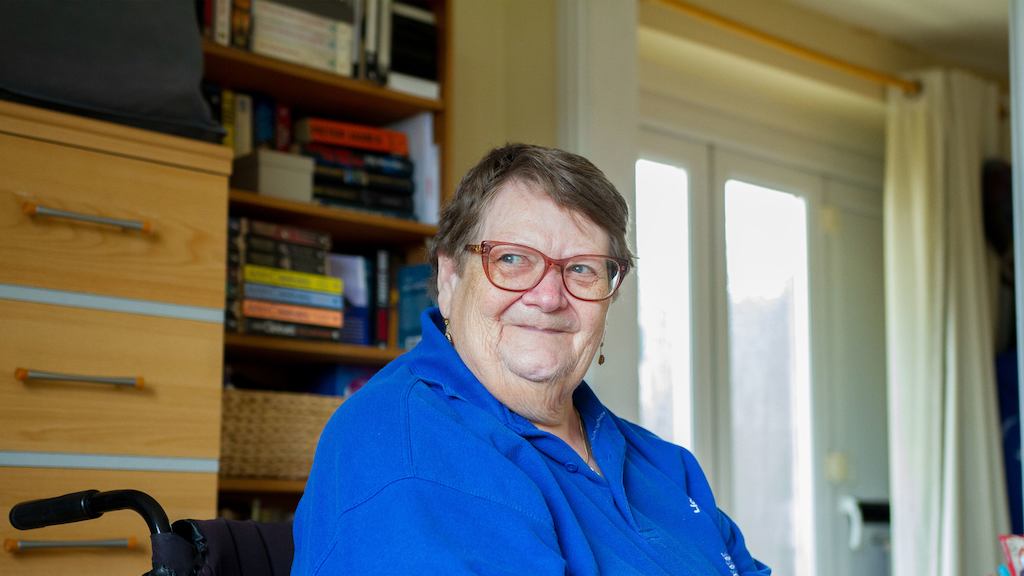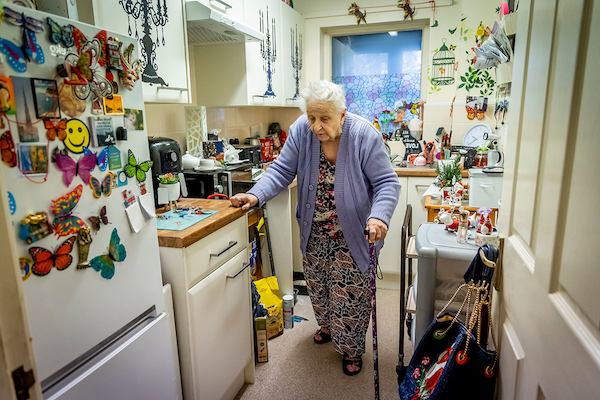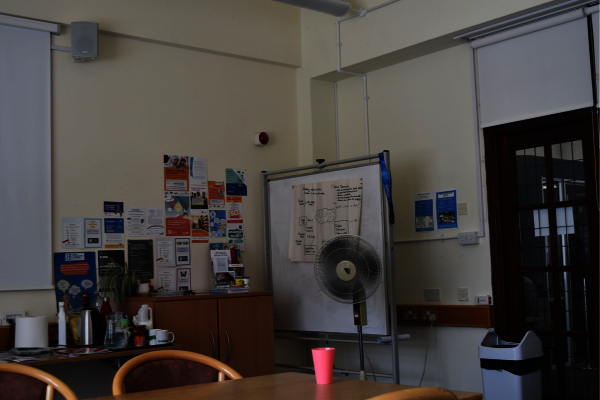Janet and Paul’s Story - The importance of an accessible home

Janet and her husband Paul live in Swindon. They became a couple when Janet moved into a sheltered housing scheme after being unable to remain in her previous home, which was neither accessible nor adaptable for her as a wheelchair user.
When they married, they pooled their resources and moved into the house they now share. Janet tells us how they went about finding and adapting their current home and how, as she and Paul age, they think about what they might need to do next to keep their home working for them.
“Having an accessible home means everything because it means you can lead a life for yourself and not feel that you are constantly relying on other people. It’s so important to your own personal wellbeing to be able to live your life and continue living it.”
Over the years, a series of accidents, injuries and related health conditions have had a progressive impact on Janet’s mobility. She started using a walking stick around 37 years ago and then started using a wheelchair for moving around outside about 28 years ago.
Now aged 77, Janet uses a wheelchair both in and out of the house. She currently works part-time as a lay minister. Before that she was facilities manager for a large retail chain where she also acted as their disability advisor.
When Janet’s disability reached the stage that she needed to use a wheelchair indoors, she realised that the house she had lived in since she was born couldn’t be adapted.
You would be very restricted in how you maneuvered around the house as it was not feasible to widen the doors for a wheelchair…
Janet moved into sheltered accommodation and while the flat itself was adequate for her accessibility needs, moving there had a significant impact on her mental health. At the time she didn’t like being somewhere that she felt catered exclusively to people older than her.
“I have to admit I was quite depressed. Not only did I have to leave the house, but I had also just within the last 18 months lost my job. I had just lost my mother, and I had just lost my aunt.”
However, it was also the place where she reconnected with an old acquaintance, Paul, and within three months of Janet moving in they became a couple. When they decided to get married, they pooled their resources and started to look for a house. Paul went out with an estate agent who’d been briefed that they wanted somewhere they could make adaptations to, and they found the house Janet and Paul now live in.
They didn’t contact the local authority for support to adapt their new home as they felt they wouldn’t meet the eligibility criteria for financial support. But they were able to fund adaptations to the ground floor of the house through their mortgage. Janet and Paul worked together to think through what they needed and what would work for them.
As Janet says:
People forget this involves the husband or the partner – they’re involved as much as well. It’s like the house needs to work for the family, doesn’t it?
They used a local contractor to do the work including installing bi-fold doors at front and back, widening internal doorframes, installing an accessible wet room and lowering some kitchen units. Janet was pleased with how the work went and they were fortunate that her nephew was able to help with the electrics.
However, Janet has never been upstairs to the first floor of her house. “I’ve had a video tour,” she says ruefully.
Bungalows in the local area, where all rooms would have been accessible to Janet, were over their budget and the cost of adapting the upstairs was also prohibitive for them. This part of the house is now not used and the water in the upstairs bathroom is turned off.
“I’m frustrated knowing there’s lots of space up there that I could make use of. But what’s the point of putting all my books up there if I can’t get them back.”
The unused storage space is a moot point now that Janet and Paul are starting to think about what other adaptations and changes, they will need to make as they age, their physical health changes and their mobility gets worse.
“This house will not fit two wheelchairs around unless we have a real think about how we work things. I could have a real clear out, I’ve got about four bookcases. I suppose one of the things I could do is find some way of decluttering better, it might give us more room.”
Janet’s experience both as a disability adviser and having been shown multiple inappropriate housing options before moving into the sheltered accommodation has made her a strong advocate for providing people with information and support.
She believes it’s important to get information out to people telling them there is help and support available. She urges people in a similar situation to not feel frightened about asking for help and encourages people to think in terms of what they can do now and what they will be able to in future as they age:
“Disability does not mean inability. You can still do things, but they may have to be done slightly differently, and you might have to adapt how you do things.”



